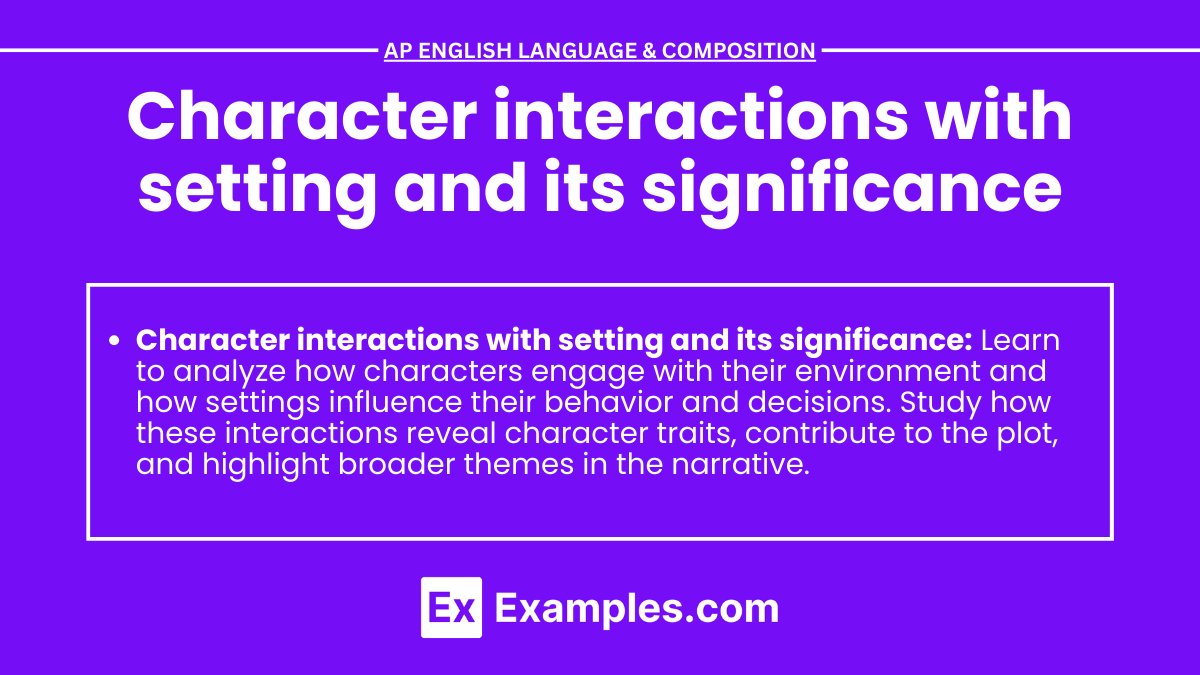In preparing for the AP English Language and Composition exam, mastering the analysis of character interactions with setting and their significance is essential. By crafting rhetorical sentences and employing cumulative sentences, students can enhance their argumentative writing and argumentative speech. This analysis involves examining how characters engage with their environment, how the setting influences their behavior and decisions, and how these interactions reveal deeper themes and contribute to character development. Understanding these dynamics allows for the construction of compelling literary arguments, showcasing an ability to dissect the intricate relationships between setting and character.
Learning Objectives
In studying character interactions with setting and their significance for the AP English Language and Composition exam, students will learn to construct cumulative sentences that build depth and complexity in their analysis. They will develop skills to write both explanatory essays that clarify how settings influence characters and expository essays that provide structured, detailed arguments. By incorporating rhetorical sentences, students will enhance the persuasiveness of their writing. Crafting a final thesis statement will hone their ability to present clear, focused arguments. Engaging in critical thinking will enable students to analyze the deeper significance of character and setting interactions, connecting them to broader themes and motifs within the text.
Key Concepts and Terms
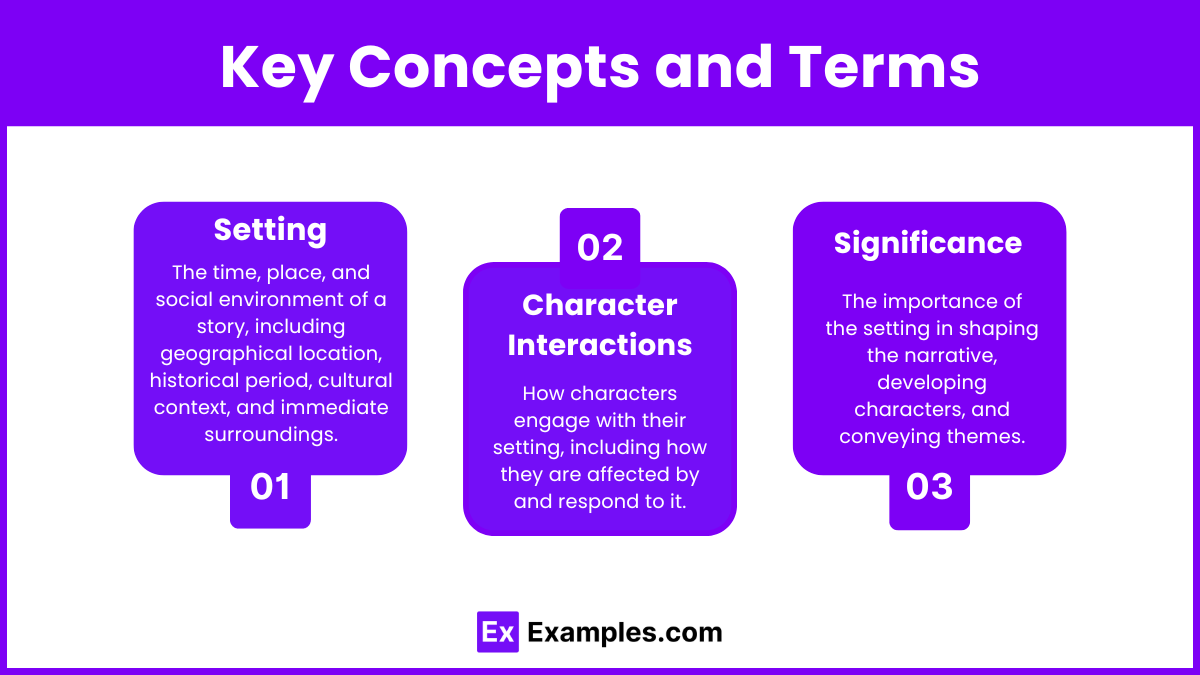
- Setting: The time, place, and social environment in which a story takes place. It can include geographical location, historical period, cultural context, and immediate surroundings.
- Character Interactions: How characters engage with their setting, including how they are affected by and respond to it.
- Significance: The importance of the setting in shaping the narrative, developing characters, and conveying themes.
Analyzing Setting
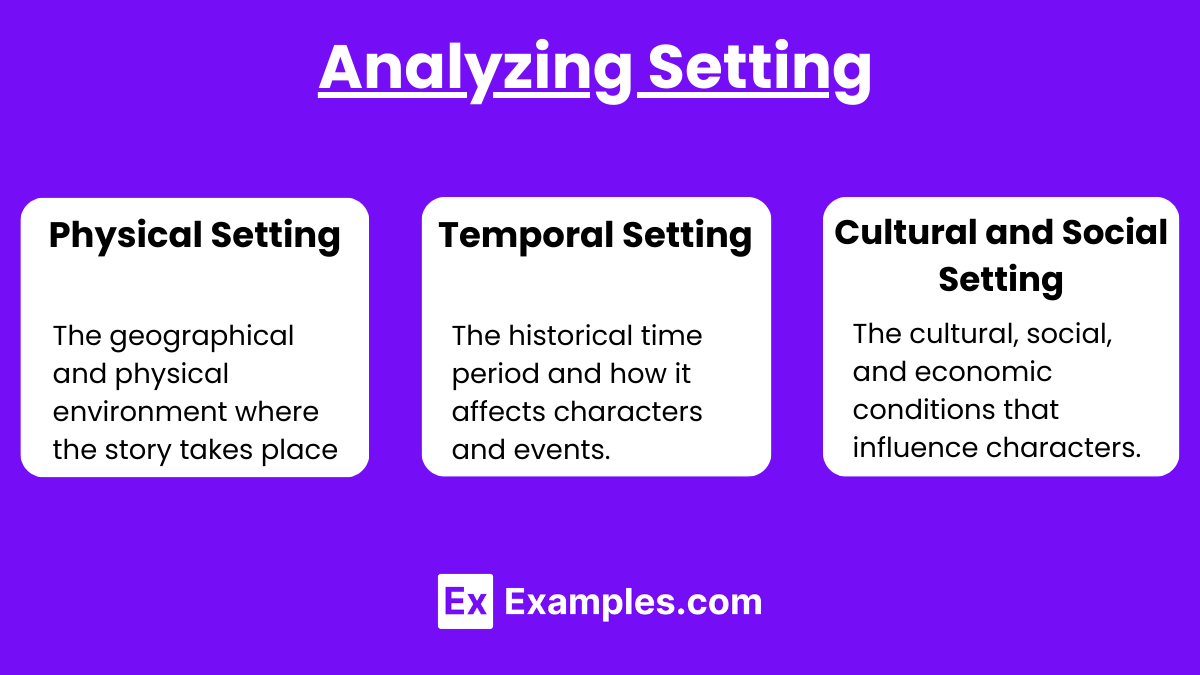
- Physical Setting: The geographical and physical environment where the story takes place.
- Example: The moors in Emily Brontë’s “Wuthering Heights” create a bleak, wild atmosphere that reflects the tumultuous emotions of the characters.
- Temporal Setting: The historical time period and how it affects characters and events.
- Example: The 1920s setting in F. Scott Fitzgerald’s “The Great Gatsby” underscores themes of excess, the American Dream, and societal change.
- Cultural and Social Setting: The cultural, social, and economic conditions that influence characters.
- Example: The racial tensions in Harper Lee’s “To Kill a Mockingbird” profoundly affect the characters and plot, highlighting issues of prejudice and moral integrity.
Character Interactions with Setting
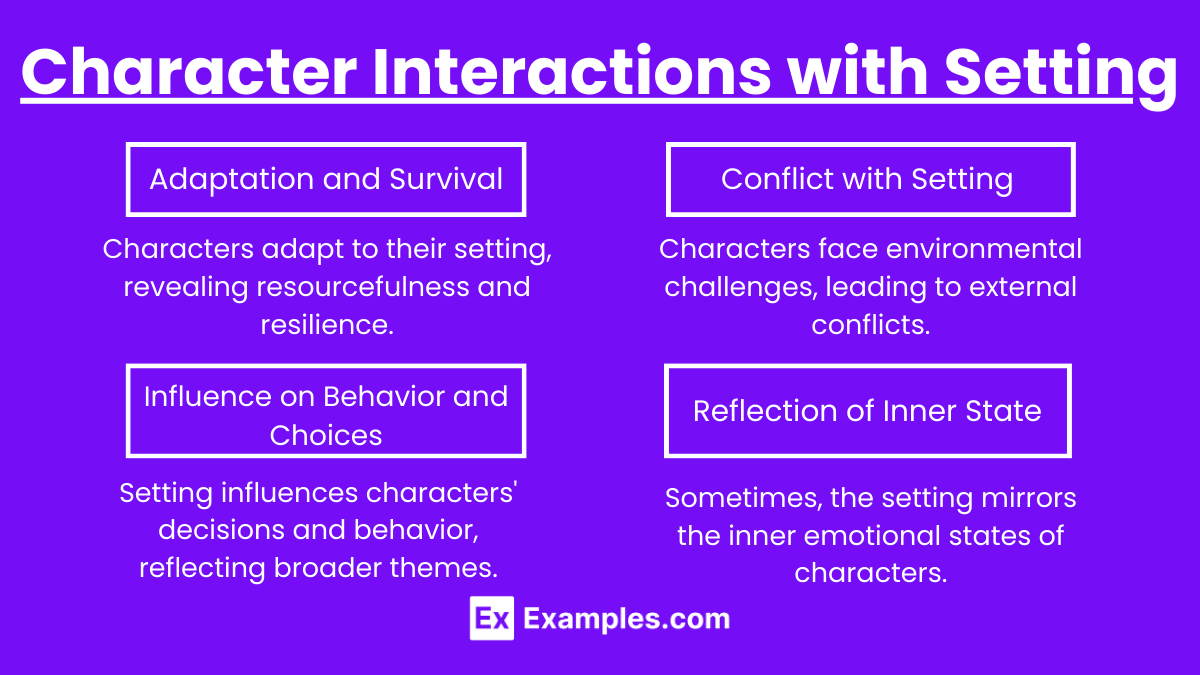
- Adaptation and Survival: Characters must adapt to their setting, which can reveal their resourcefulness and resilience.
- Example: In Jack London’s “The Call of the Wild,” Buck’s adaptation to the harsh Alaskan wilderness reveals his primal instincts and strength.
- Conflict with Setting: Characters often face challenges posed by their environment, leading to external conflicts.
- Example: In “Lord of the Flies” by William Golding, the boys’ struggle to survive on the uninhabited island leads to societal breakdown and savagery.
- Influence on Behavior and Choices: The setting can influence characters’ decisions and behavior, reflecting broader themes.
- Example: In “A Streetcar Named Desire” by Tennessee Williams, the New Orleans setting affects Blanche DuBois’s actions and symbolizes the clash between old Southern gentility and modern urban reality.
- Reflection of Inner State: Sometimes, the setting mirrors the inner emotional states of characters.
- Example: In “The Yellow Wallpaper” by Charlotte Perkins Gilman, the oppressive room reflects the protagonist’s mental deterioration.
Significance of Setting
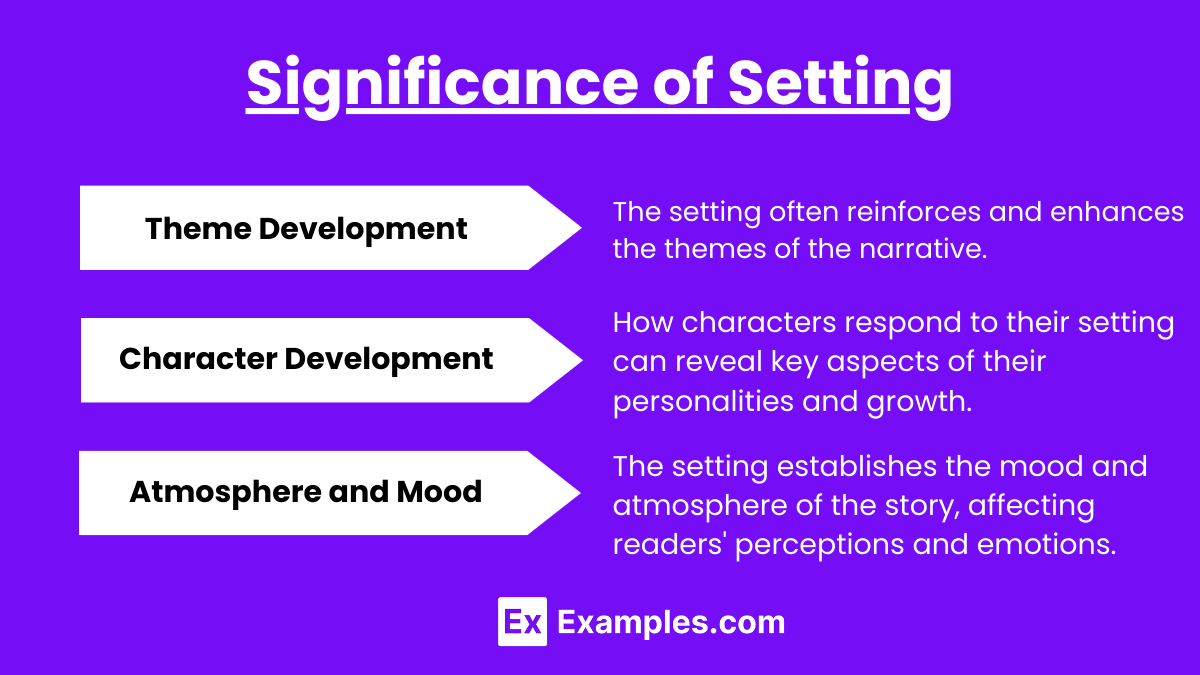
- Theme Development: The setting often reinforces and enhances the themes of the narrative.
- Example: In John Steinbeck’s “The Grapes of Wrath,” the Dust Bowl setting highlights themes of struggle, migration, and social injustice.
- Character Development: How characters respond to their setting can reveal key aspects of their personalities and growth.
- Example: In “Jane Eyre” by Charlotte Brontë, the various settings (Gateshead, Lowood, Thornfield) each play a crucial role in Jane’s personal development and moral education.
- Atmosphere and Mood: The setting establishes the mood and atmosphere of the story, affecting readers’ perceptions and emotions.
- Example: The oppressive heat in William Faulkner’s “As I Lay Dying” adds to the sense of decay and desperation.
Examples and Practice
Example 1: “Wuthering Heights” by Emily Brontë
- Setting: The Yorkshire moors
- Character Interaction: Heathcliff’s connection to the moors reflects his wild, untamed nature.
- Significance: The setting underscores the themes of isolation and passion.
Example 2: “The Great Gatsby” by F. Scott Fitzgerald
- Setting: 1920s New York
- Character Interaction: Gatsby’s mansion symbolizes his wealth and desire to recreate the past.
- Significance: The setting highlights themes of the American Dream and societal excess.
Example 3: “To Kill a Mockingbird” by Harper Lee
- Setting: 1930s Alabama
- Character Interaction: The Finch family navigates the deeply entrenched racism of their town.
- Significance: The setting emphasizes the themes of racial injustice and moral courage.

